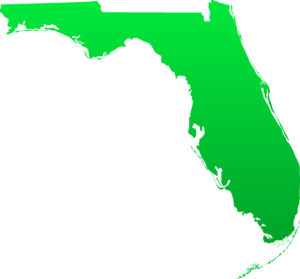(a) Nonadversary Probable Cause Determination.
(1) Defendant in Custody. In all cases in which the defendant is in custody, a nonadversary probable cause determination shall be held before a judge within 48 hours from the time of the defendant’s arrest; provided, however, that this proceeding shall not be required when a probable cause determination has been previously made by a judge and an arrest warrant issued for the specific offense for which the defendant is charged. The judge after a showing of extraordinary circumstance may continue the proceeding for not more than 24 hours beyond the 48-hour period. The judge, after a showing that an extraordinary circumstance still exists, may continue the proceeding for not more than 24 additional hours following the expiration of the initial 24-hour continuance. This determination shall be made if the necessary proof is available at the time of the first appearance as required under rule 3.130, but the holding of this determination at that time shall not affect the fact that it is a nonadversary proceeding.
(2) Defendant on Pretrial Release. A defendant who has been released from custody before a probable cause determination is made and who is able to establish that the pretrial release conditions are a significant restraint on his or her liberty may file a written motion for a nonadversary probable cause determination setting forth with specificity the items of significant restraint that a finding of no probable cause would eliminate. The motion shall be filed within 21 days from the date of arrest, and notice shall be given to the state. A judge who finds significant restraints on the defendant’s liberty shall make a probable cause determination within 7 days from the filing of the motion.
(3) Standard of Proof. Upon presentation of proof, the judge shall determine whether there is probable cause for detaining the arrested person pending further proceedings. The defendant need not be present. In determining probable cause to detain the defendant, the judge shall apply the standard for issuance of an arrest warrant, and the finding may be based on sworn complaint, affidavit, deposition under oath, or, if necessary, on testimony under oath properly recorded.
(4) Action on Determination. If probable cause is found, the defendant shall be held to answer the charges. If probable cause is not found or the specified time periods are not complied with, the defendant shall be released from custody unless an information or indictment has been filed, in which event the defendant shall be released on recognizance subject to the condition that he or she appear at all court proceedings or shall be released under a summons to appear before the appropriate court at a time certain. Any release occasioned by a failure to comply with the specified time periods shall be by order of the judge on a written application filed by the defendant with notice sent to the state or by a judge without a written application but with notice to the state. The judge shall order the release of the defendant after it is determined that the defendant is entitled to release and after the state has a reasonable period of time, not to exceed 24 hours, in which to establish probable cause. A release required by this rule does not void further prosecution by information or indictment but does prohibit any restraint on liberty other than appearing for trial. A finding that probable cause does or does not exist shall be made in writing, signed by the judge, and filed, together with the evidence of such probable cause, with the clerk of the court having jurisdiction of the offense for which the defendant is charged.
(b) Adversary Preliminary Hearing.
(1) When Applicable. A defendant who is not charged in an information or indictment within 21 days from the date of arrest or service of the capias on him or her shall have a right to an adversary preliminary hearing on any felony charge then pending against the defendant. The subsequent filing of an information or indictment shall not eliminate a defendant’s entitlement to this proceeding.
(2) Process. The judge shall issue such process as may be necessary to secure attendance of witnesses within the state for the state or the defendant.
(3) Witnesses. All witnesses shall be examined in the presence of the defendant and may be cross-examined. Either party may request that the witnesses be sequestered. At the conclusion of the testimony for the prosecution, the defendant who so elects shall be sworn and testify in his or her own behalf, and in such cases the defendant shall be warned in advance of testifying that anything he or she may say can be used against him or her at a subsequent trial. The defendant may be cross-examined in the same manner as other witnesses, and any witnesses offered by the defendant shall be sworn and examined.
(4) Record. At the request of either party, the entire preliminary hearing, including all testimony, shall be recorded verbatim stenographically or by mechanical means and at the request of either party shall be transcribed. If the record of the proceedings, or any part thereof, is transcribed at the request of the prosecuting attorney, a copy of this transcript shall be furnished free of cost to the defendant or the defendant’s counsel.
(5) Action on Hearing. If from the evidence it appears to the judge that there is probable cause to believe that an offense has been committed and that the defendant has committed it, the judge shall cause the defendant to be held to answer to the circuit court; otherwise, the judge shall release the defendant from custody unless an information or indictment has been filed, in which event the defendant shall be released on recognizance subject to the condition that he or she appear at all court proceedings or shall be released under a summons to appear before the appropriate court at a time certain. Such release does not, however, void further prosecution by information or indictment but does prohibit any restraint on liberty other than appearing for trial. A finding that probable cause does or does not exist shall be made in writing, signed by the judge, and, together with the evidence received in the cause, shall be filed with the clerk of the circuit court.
(c) Additional Nonadversary Probable Cause Determinations and Preliminary Hearings. If there has been a finding of no probable cause at a nonadversary determination or adversary preliminary hearing, or if the specified time periods for holding a nonadversary probable cause determination have not been complied with, a judge may thereafter make a determination of probable cause at a nonadversary probable cause determination, in which event the defendant shall be retained in custody or returned to custody upon appropriate process issued by the judge. A defendant who has been retained in custody or returned to custody by such a determination shall be allowed an adversary preliminary hearing in all instances in which a felony offense is charged.

